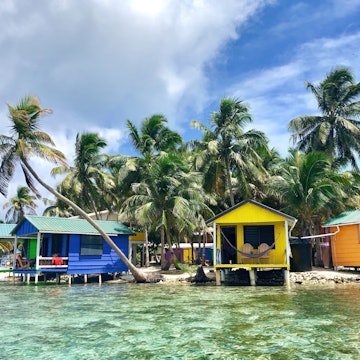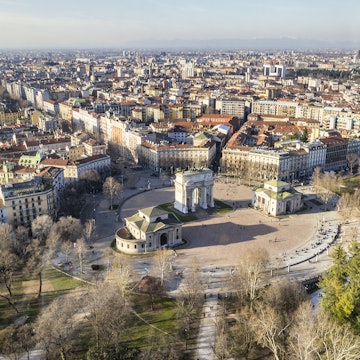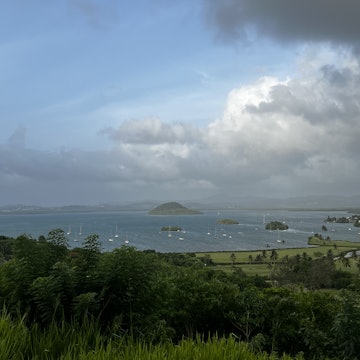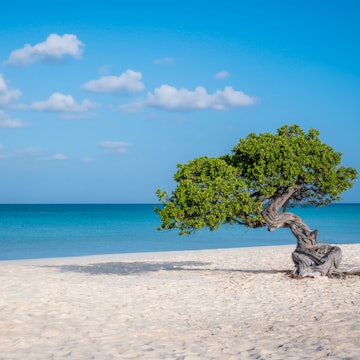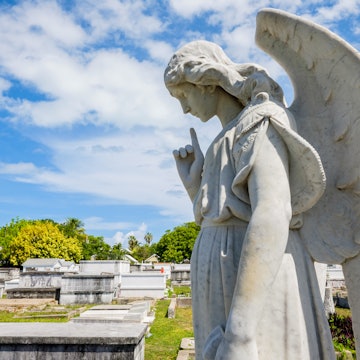

We tested six camera backpacks, including the EVOC CP 26l © Robert Annis / Lonely Planet
If there’s one thing photographers love to talk about – other than the stories behind their favorite images – it’s gear. Get a bunch of shutterbugs together and they’ll be gossiping about the sharpness of their latest lens or the resolution of their new camera in no time.
When the subject of camera bags comes up, it quickly becomes apparent – finding the perfect one is as elusive as photographing Bigfoot. Award-winning outdoor photographer Michelle Craig helped test six camera backpacks, offering her professional expertise and perspective. We tested the bags with a focus on comfort, organization, durability and, of course, the ability to cram in as much camera gear as possible.

WANDRD Veer 18, $118
Pros: Easily the lightest and most packable bag we tested, you can stuff the Veer 18 into a pocket the size of a paperback book. How is that possible? Instead of the standard foam dividers, this 18-liter pack uses an inflatable sleeve large enough for a standard camera body with a medium-size lens. There are plenty of pockets for a pack of this size, and lots of outside loops to attach additional gear.
Cons: If you carry a lot of photo gear or go deep into the backwoods, this isn’t the bag for you. We would’ve liked to see some better organization for spare batteries, cards, and other gear; there’s no great place to stash a tripod on the outside either. The N100D Robic Dynatec fabric seems to be pretty durable upon initial testing, but bears observing over the long haul. I like how the camera cube is held in place by a mesh pocket, but it would have been nice for the zipper to start from the bottom, allowing you to only open it enough to access the camera. Not the most comfortable pack for female shooters.
Best for: Casual city shooting or very light hikes. This would be great to stash in your checked suitcase for when you don’t want to lug a heavier camera bag around.

Hex Cinema Backpack, $240
Pros: If you’re an everything-but the-kitchen-sink shooter, then Hex has made a 27-liter pack for you. Multiple access points allow you to grab a camera from the top of the Cinema and your most heavily used lens from the side. The back zipper allows you to access all 12 compartments, which can fit up to two cameras or a camera and a drone. You’ll find lots of mesh pockets for extra batteries, filters, and more. (One is even color-coded for spent batteries.) The front pocket has the type of organization most of the other packs are lacking, with places for pens, notebooks, and other everyday gear. The padded laptop sleeve fits up to a 17-inch computer, as well as an iPad or a couple of magazines. The shoulder straps are nicely padded, and the hip belt felt comfortable.
Cons: My biggest gripe is the lack of room for gear like a jacket or a packable hammock for light overnight camping. A potential compromise would have been some gear loops so you can attach items with a carabiner, but those are absent as well. I disliked both the Velcro tripod straps on the bottom of the pack and the chest strap, which isn’t long enough for bustier photographers.
Best for: Shooters with multiple cameras and lenses. It’s the least versatile bag we tested, but it does its one job well. Ideal for short hikes when you don’t need to bring along much additional gear or you’re with another person carrying all your other needs.

F-Stop Lotus, starting at $240
Pros: The 32-liter Lotus was probably the most versatile pack we tested, thanks to its modular system. You can change out the camera compartment, going bigger or smaller based on your needs. Although all of the packs we tested are well-constructed and should withstand abuse on the trail, the Lotus might be toughest, thanks to its sturdy internal aluminum frame. A nearly hidden pocket on the bottom allows you to stash things like a passport or cash.
Cons: Of all the packs we tested, we had the most mixed feelings about this one. To take advantage of its versatility, you’ll want to buy additional accessories, which quickly add to the price. The biggest design flaw was not being able to access camera gear without taking off the pack and opening it from the back. Laptops up to 13 inches will fit in the unpadded internal compartment, although I wouldn’t trust my MacBook Pro in it without the added protection of a padded sleeve.
Best for: Photographers who need a multi-purpose pack and aren’t shooting on the fly.

Thule Aspect DSLR Camera Bag, $130
Best Value
Pros: There’s plenty of storage space above the camera compartment in the Aspect for all-day hikes. The laptop space is roomy enough for 15-inch computers and is easily the most well-protected. It’s also one of the more comfortable packs we tested, with plenty of padding in the right places. We wouldn’t expect anything less from Thule, which has been making great bags for years.
Cons: There’s only one side-access point for camera gear, and it’s a bit tight, albeit well protected. Other than the Veer 18 and its inflatable camera cube, this has the least amount of room for camera equipment of all the packs we tested. You can fit a camera, two or three medium-size lenses, and an accessory or two. It has a few interior zipper pockets for batteries and spare cards, but it could use more. No exterior gear loops. A side pocket is large enough for either a small tripod or a water bottle, but not both – a major oversight.
Best for: Shooters with minimal camera gear who need to stay nimble. It’s compact enough to wear on a bike commute, while still carrying all the gear you need for the day.

EVOC CP 26l, $300
Pros: The CP 26l feels huge, even though at 26 liters, it’s about the same size as the Thule and the Hex. The camera compartment was the most spacious of the combo packs we tested; wildlife photographers can even fit in a camera with a reasonably long lens attached. The exterior pocket for a hydration bladder was just the right size for a 2-liter system. Although it didn’t rain during our testing, gear would obviously stay dry thanks to the built-in rain cover. Winter shooters will appreciate having dedicated loops for ice axes and shovels. One of the more comfortable packs we tested.
Cons: The pack felt a bit heavy on a day hike through the Grand Tetons. The back flap had plenty of pockets and compartments, but they were tight; it was nearly impossible to fit multiple batteries into most of them. The gear pockets were relatively roomy, but they didn’t have much organization. Most gear was just bouncing around, and it often took a minute or two to find something inside.
Best For: Wildlife photographers on longer day hikes.

MindShift Rotation 180 Horizon 34L, $260
Best in class
Pros: We’d been told by adventure photographer John Shafer the Rotation 180 Horizon was a ‘game changer,’ allowing him to access his camera in deep snow and steep terrain without taking off his pack. He was right. We loved being able to slide the hip belt around the waist to bring the camera pouch to the front. It was also the best-fitting and most comfortable bag we tried. At 34 liters, the pack was larger than nearly all the other bags, letting us fit in more gear. With numerous exterior loops, there were almost too many storage options. I wouldn’t hesitate to use this on a light, warm-weather overnight.
Cons: The sliding camera compartment is a bit smaller than we would have liked. I might be able to fit in a Sony a6500 with a long telephoto lens, but it would be tight. This bag would definitely make me think twice about what lenses I take with me. There’s no dedicated rain cover.
Best for: Action and wildlife photographers on the go.





